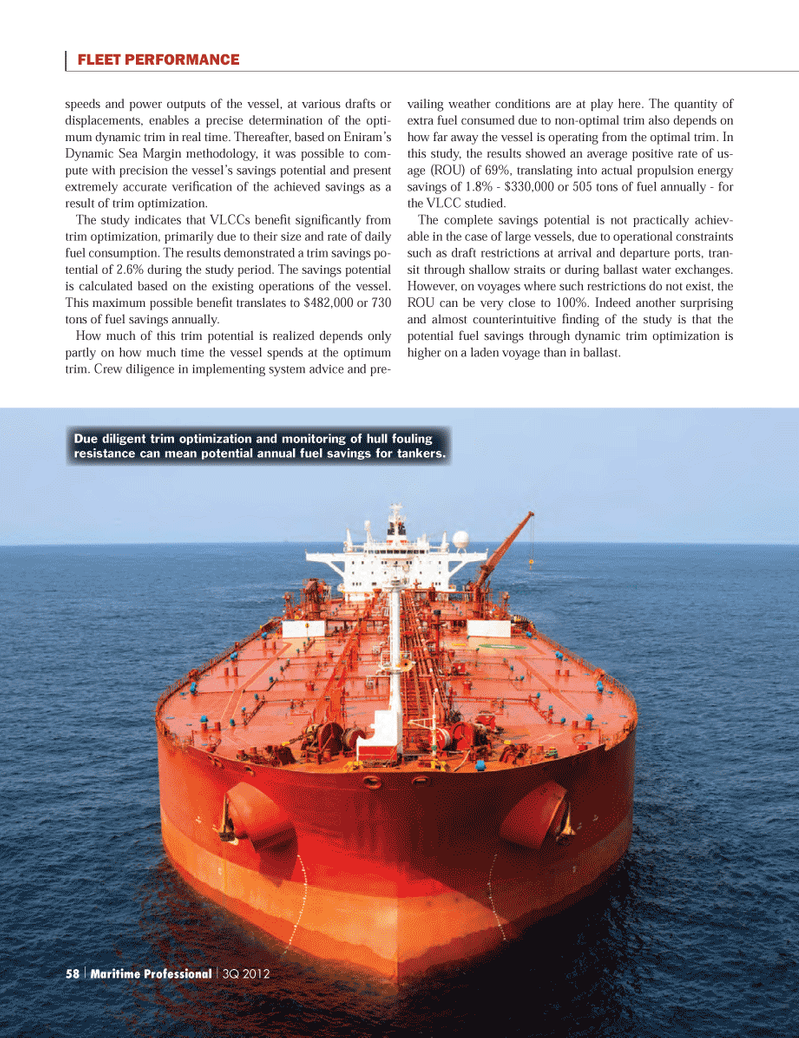
Page 58: of Maritime Logistics Professional Magazine (Q3 2012)
Classification Societies, Quality & Design
Read this page in Pdf, Flash or Html5 edition of Q3 2012 Maritime Logistics Professional Magazine
speeds and power outputs of the vessel, at various drafts or displacements, enables a precise determination of the opti-mum dynamic trim in real time. Thereafter, based on Eniram?s Dynamic Sea Margin methodology, it was possible to com- pute with precision the vessel?s savings potential and present extremely accurate veri cation of the achieved savings as a result of trim optimization. The study indicates that VLCCs bene t signi cantly from trim optimization, primarily due to their size and rate of daily fuel consumption. The results demonstrated a trim savings po- tential of 2.6% during the study period. The savings potential is calculated based on the existing operations of the vessel. This maximum possible bene t translates to $482,000 or 730 tons of fuel savings annually. How much of this trim potential is realized depends only partly on how much time the vessel spends at the optimum trim. Crew diligence in implementing system advice and pre- vailing weather conditions are at play here. The quantity of extra fuel consumed due to non-optimal trim also depends on how far away the vessel is operating from the optimal trim. In this study, the results showed an average positive rate of us- age (ROU) of 69%, translating into actual propulsion energy savings of 1.8% - $330,000 or 505 tons of fuel annually - for the VLCC studied. The complete savings potential is not practically achiev- able in the case of large vessels, due to operational constraints such as draft restrictions at arrival and departure ports, tran- sit through shallow straits or during ballast water exchanges. However, on voyages where such restrictions do not exist, the ROU can be very close to 100%. Indeed another surprising and almost counterintuitive nding of the study is that the potential fuel savings through dynamic trim optimization is higher on a laden voyage than in ballast. FLEET PERFORMANCE Due diligent trim optimization and monitoring of hull fouling resistance can mean potential annual fuel savings for tankers. 58 | Maritime Professional | 3Q 2012

 57
57

 59
59
